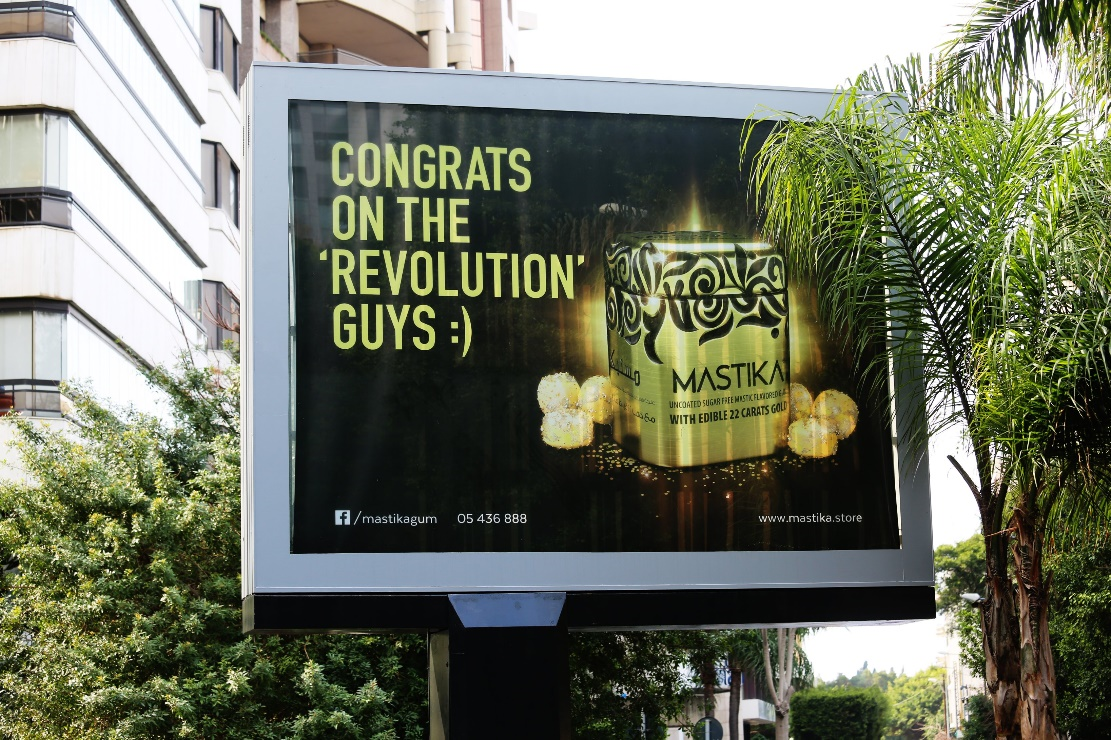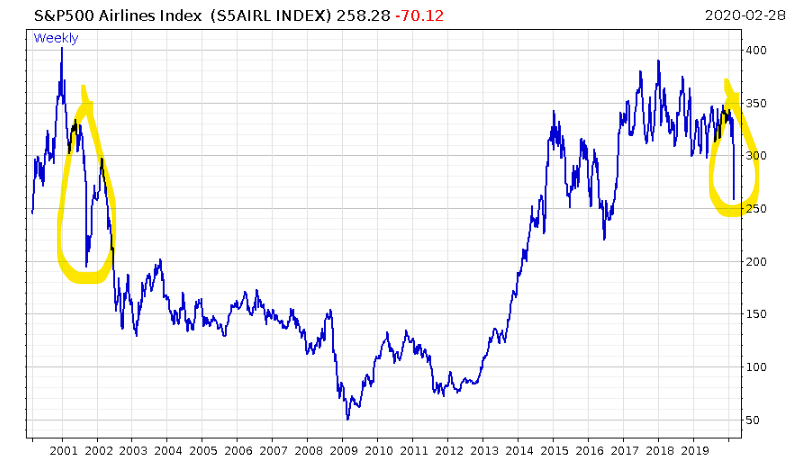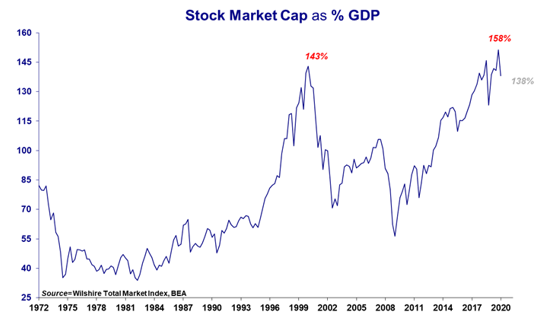Another day, another dollar CEO decides they don’t want to be responsible for what happens next.
This time it’s the man at the helm of Harley-Davidson ($HOG) who’s joined the group of easy-rider executives cruising into the sunset.
What happens next for the company, well, that’s the next guy’s problem…
Further up the wealth chain, the world’s richest 500 people lost $444 billion in net worth last week. The top three, Jeff Bezos, Bill Gates, and Bernard Arnault (who as we described last week, recently got a free Breakfast at Tiffany’s courtesy of the European Central Bank) lost an average of $10 billion apiece.
That $10 billion blow must have left Bezos in a state. For him, that’s a little over a quarter of a divorce…
I hope the market tanking is making the envious billionaire haters feel richer. After all, wealth is a zero-sum game, and if we just got rid of all the billionaires, the government would be able to afford anything, right? … Right..?
Have no fear, comrades: change is coming. Just like it is in Lebanon, as celebrated by this advert for 22-carat gold chewing gum:
 Source: @SulomeAnderson on Twitter
Source: @SulomeAnderson on Twitter
The Lebanese government is considering selling its gold reserves to finance its debts. Like I said yesterday: when push comes to shove in a highly indebted environment, gold gets sold for a fistful of Benjamin Franklins. That’s why the gold price took another cricket bat to the face yesterday.
The financial press is in a land of confusion. Cryptocurrencies are experiencing a mild rally while the European stockmarket is getting nuked. And it’s not like the cryptomarket is doing much to help its PR, either. From Market Crumbs:
What a time to be alive. In what may not be too surprising to some, a cryptocurrency named “CoronaCoin” has launched amidst the coronavirus outbreak. As more people die from the virus, the number of available tokens will decline, while subsequently increasing in value. The creators of the coin launched 7,604,953,650 tokens, which represents the world’s estimated population. “As the number of infected/dead from the virus increases, the number of tokens are manually burned every 48 hours,” CoronaCoins’ website reads. “So for every one infection, one token is burned.”
Meanwhile, the market for airlines is looking similar to its experience right after 9/11.

But will there be a V-shaped bounce, as there was back then? Is all this noise merely another “buy-the-dip” opportunity? A lot of people want you to think so. Central bankers in the G7 want everybody to know that they’re gonna have one big happy Skype call where they’ll figure out exactly how much fiat currency is required to stop a pandemic (who needs medicine when you have Christine Lagarde?).
Hell, even the director general of the World Health Organisation is trying to jawbone markets higher. From CNBC:
Market panic over the fast-spreading new coronavirus is uncalled for, the World Health Organization’s director-general said Sunday as governments around the world rush to contain its spread.
“Global markets … should calm down and try to see the reality,” Tedros Adhanom Ghebreyesus told CNBC’s Hadley Gamble during a panel discussion at the King Salman Humanitarian Aid Center’s International Humanitarian Forum in Riyadh. “We need to continue to be rational. Irrationality doesn’t help. We need to deal with the facts.”
But what if the market threw a buy-the-dip party, and nobody showed up? That’s what happened yesterday to millennials when the widely popular trading app called Robinhood simply stopped working and nobody could do anything with their money, let alone invest it.
Want to buy the dip? No dice. Want to sell the dip and get your cash out? That’s too bad, kiddo.
But if you do use this as an investment opportunity… what exactly are you buying?
Now, the next chart may be of the US stockmarket, but it’s still relevant to investors more broadly. Due to the diversification drive from asset managers in recent years, investors from all over the place outside the US have vast exposure to its stockmarket.
The average retail “investor”, or individual with a defined contribution pension scheme, likely has significant exposure to the Star-Spangled stockmarket. I hope you have – that’s where all the gains have been these last few years.
But said stockmarket’s value, relative to value of economic activity actually going on within the US, is reaching some rather “interesting” levels:
All the furore you’ve heard over the last couple weeks has led to that tiny downtick on the top-right corner.
As the creator of that chart, Stephanie Pomboy, points out:
… after the ‘flush’ last week, the market is still at its 2nd highest valuation in history. This ratio has averaged 100% over the last 3 decades[note left scale]. Getting back to that would require lopping another $8t off mtk cap (that’s assuming we neatly revert to the mean).
If this is in fact The End, it is most certainly the beginning of said End.
But is it?
It’s certainly the beginning of something. Our publisher Nick O’Connor is calling it “The End of the Bull Market”. But key to that slogan is the fact that the End of a Bull Market can mean an enormous blow-off top that can make you a fortune if you get out at the right time.
I think we’re much closer to the blow-off phase than the crash phase. Everybody stressing about coronavirus only makes me more convinced. If markets have already diverged from reality and are beholden to purely financial impulses like passive inflows, central bank printing presses, and stock buybacks, why should they care about this?
I made a relatively large bet (for me) on Sunday evening that the Vix index peaked on Friday, for reasons I’ll explore in tomorrow’s note. Having caught it before its ride up, I’m trying to short it all the way back into the dirt, the bastard.
Shorting anything can be hard on the spirit, let alone a measure of volatility during a global virus outbreak, but Friday’s spike was a historic one, and the opportunities to ride something so high up all the way down don’t come along often.
It’s not a problem for me to take that risk, or to share this with you, as I can accept being wrong.
Lord knows I’ve committed my own share of mistakes. And as this week we’re focusing on the indicators and warnings investors should pay attention to, I thought I’d tell you about the biggest investing mistake of my life – which all revolved around ignoring one obvious indicator.
Market post-mortem
Just remember that Mr Market will coax everybody back into the pool before he tosses the toaster oven in.
– Dave Collum, Cornell University chemistry professor/fringe financial commentator
A teacher at my school used to call checking your answers after you’d handed in an exam a “post-mortem”. Amen to that.
Dwelling on opportunities missed and roads not taken rarely leads to positive outcomes in my experience. But you should always be honest with yourself, and revisit past decisions whenever you’ve made a serious error so as not to repeat it.
After all, there is a difference between feeling sorry for yourself and “what iffing” your life away, and trying to learn lessons so you’re less of an idiot in future.
Sometimes you just have to bite the bullet, cauterise the wound to your pride, and straight up admit you made a mistake.
As you’ll likely know if you’ve been reading this letter, I was relatively early to the crypto space, and found out about it at school. One thing you’ll always hear from crypto enthusiasts is that they regret not buying more, earlier, and that certainly applies to me.
However, that’s not the mistake I’m referring to. This occurred in December 2017, during the peak of the crypto mania.
Around Christmas-New Year time, I was sitting on a 4,200% gain from an altcoin called Verge.
If 4,200% (gained over around three months) isn’t absurd enough, the true figure is actually significantly higher than that, as most of the cash I’d invested in it originally I had earned as a bonus from simply owning bitcoin.
When part of the bitcoin mining community decided to go a separate way from the bitcoin community, they “forked” away from the main bitcoin network with their own version of the system. This meant that anybody who owned bitcoin at the time of the schism earned an equal amount of “Bitcoin Cash” as their bitcoin by default. I wasn’t a fan of this new form of BTC, (called BCH), and sold it for real bitcoin, which I then invested in Verge.
This turned what had become something of a crypto bonus or dividend into a colossal gain. What had started as around $600 was now worth in excess of 25 grand in just a few months. The crypto bull market of ‘17 really was one of the most incredible bull runs in history – that’s why you need to pay close attention to one when it stirs, as you may miss another absurd ride to riches (I believe later this year we’ll see it again, but that’s another story).
When I was back at home at Christmas time, my family was talking all about crypto – it was all over the news. Former colleagues of mine in the financial advice business had clients who were asking them about it. My friends were asking me which cryptos they should buy.
This is literally one of the most textbook indicators that it’s time to sell, no different than the tale of Joe Kennedy, a Wall Streeter who was told he should buy Hindenburg stock by his shoe-shine boy at the end of the roaring Twenties and knew then was the time to cash out.
But I didn’t.
I could see that it was a mania. The euphoria in the streets was palpable, let alone in the market. But I didn’t want to believe it. Partly because it would mean that the technology wasn’t going to suddenly change the world. It was also because the mainstream media had been pretty much permanently wrong on crypto until that point, and I saw all of their moaning as contrarian indicators. But mostly, it was because that would mean that my crazy gains weren’t going to continue appreciating. It was in my own best interest not to trust my instincts.
So when I should have just called it quits, and sold all my altcoins (not just Verge), I didn’t. I held on.
And there were plenty of narratives to hold on to. Hell, the crypto community was a narrative factory at the time for new developments and ever brighter horizons. While I recognised it was getting manic out there, I thought it could get much more manic still. There was more cash still on the sidelines that would pour into the space in short order.
By the time I realised the 2017 crypto run truly was over by mid-2018 and I dumped my Verge, the crypto crash was near total.
Ironically, my own short-term greed actually saved much of my riches in the end. Feeling the full force of the “wealth effect” that central bankers are relentlessly trying to create (and in this case succeeded) over Christmas time, I had sold much of my stash to buy various valuable objects I desired, including gold.
So I had spent a fair chunk of my Verge stack by the time the peak came. But by no means all of it. And that’s how I lost thousands of pounds, recognising a mania, but not capitalising on it; allowing emotion to stifle my action.
Those thousands of pounds had been “free money” to begin with which cushioned the blow but it was thousands of pounds nonetheless. Indeed, If I had just indulged in a massive vanity purchase, and spent my entire stack on a decent Swiss watch, I would have preserved more wealth than “investing for the long term”.
Funnily enough, the price of Verge is now the same price as when I first bought it – bouncing between a third and a fifth of a cent per token.
And as you may know, I believe this year we may well see a repeat of the cryptomania of 2017 if the coronavirus ends up being a paper tiger, as the conditions which preceded 2017 are on full display now…
But that’s for another letter.
Recognising a bubble early and riding it to the top is commendable. Recognising you are in a bubble late in the game and not doing anything about it is something else entirely. Watching XVG hit triple-digit gains day after day had not instilled in me a need to develop an exit strategy – and it’s a mistake I’m determined not to make again.
Tomorrow, we’ll explore how psychopaths don’t have this problem. And why mimicking their trading behaviour may not actually be as dangerous as you might think…
All the best,
Boaz Shoshan
Editor, Capital & Conflict
Category: Market updates



